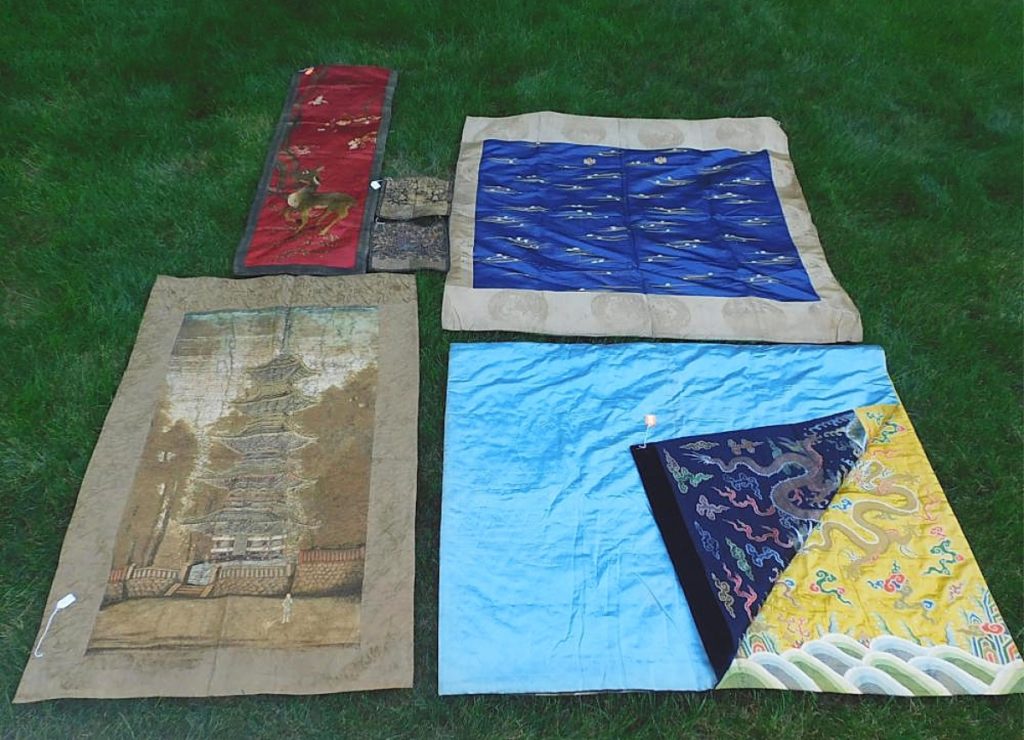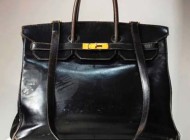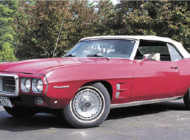
Ka-Qing! Earning top marks was an assembled group lot of Nineteenth and early Twentieth Century Qing dynasty textiles, the early favorite, with more than $11,000 in bids before the sale even started. By the time the gavel fell, the lot, which came from the Webb estate, had soared well beyond that to finish at $79,200. It was purchased by a buyer in China who was bidding on the phone ($150/250).
Review by Madelia Hickman Ring, Photos Courtesy Marion Antique Auctions
MARION, MASS. – On August 6, Frank and Diane McNamee of Marion Antique Auctions, along with partner David Glynn, conducted their fifth auction after relocating in 2020 to the old Marconi Building on Atlantis Drive. The sale, aptly titled “The Connoisseur’s Sale,” featured 530 lots of largely unreserved furniture, fine and decorative arts, toys, maritime and modern furnishings. With more than 93 percent of lots selling, the auction grossed a total of about $500,000.
“Overall, we were really pleased with how it turned out,” said Marion Antique Auctions associate Nick Taradash. “There was a lot of diversity in the sale and the results were pretty solid, with a lot of strong results.”
One of the estates and collections that fed the sale was that of the Webb Family of Marion. It was from this estate that many of the sale’s top lots came, including this top lot, a group of six Nineteenth and early Twentieth Century Qing dynasty textiles, which attracted attention from around the world and closed out – after competition between bidders both online and on the phone – to a Chinese buyer on the phone for $79,200. The lot was one of a few Chinese textile groups, which Frank McNamee said he discovered in an old trunk under the eaves in the attic.
“The family was in the diplomatic service in China during the Boxer Rebellion. Everything was wrapped in 1910 newspapers.”

The top price realized for one of nearly 50 works by Charles Maurin (French, 1856-1914) was this framed oil on canvas profile portrait of Jeanne Laurent, framed 18¾ by 15½ inches, which found a new home for $5,640 ($7/10,000).
Another lot found in the trunk also fetched a top price: a Nineteenth Century Qing dynasty Manchu woman’s changyi robe in red silk with flower and butterfly decorative motifs, the latter of which gained popularity among Manchu women as they were favored by the Empress Cixi. Estimated at $800-$1,200, the robe brought $7,500 from a trade buyer in California bidding on the phone.
Sailing to a second-place finish at $10,800 was an English prisoner of war carved model of the frigate the HMS Desiree, which was also from the Webb estate. Made during the Napoleonic Wars, circa 1794-1817, of bone and baleen by French prisoners in England. The Desiree had been captured from the French in 1798 and subsequently added to the British Navy. The Webbs had acquired the detailed 38-gun model, from Parker Gallery in London; their receipt accompanied the lot. After considerable interest, it found a new home with a dealer bidding on the phone.
Marine art was a popular category, capped at $8,640 by Antonio Nicolo Gasparo Jacobsen’s (Danish American, 1850-1921) painting of the steam ship City of Rome, which was signed and dated 1885. Measuring 26 by 40 inches in a giltwood frame, and also from the Webb estate, it was purchased by an online buyer in New Jersey
Dick Webb’s family may have collected much of what Marion was selling but the auction also included what he himself personally collected, namely things connected with vice admiral Horatio Nelson, the naval commander who brought about a series of victories for the British during the French Revolutionary and Napoleonic Wars. Nearly 20 lots in the sale were connected in some way to Nelson, including signed letters, models and ephemera connected with his ship, the HMS Victory, books, images of him in either two or three dimensions, as well as small boxes commemorating him. Achieving the most were two autographed letters, one Horatio Walpole dated October 28, 1799, which was accompanied by a colored lithograph of Nelson and which Webb had acquired from Maggs Bros., Rare Books in 1988 that an online bidder pushed to $3,968.

Of the weapons in the sale, this Civil War-era Spencer repeating carbine rifle, circa 1860s, model M1865, serial #10220, shot to $2,816 ($800-$1,200).
Forty-three works by Charles Maurin (French, 1856-1914) were a sizeable component to the sale; all had been consigned to auction by the granddaughter of Henry Laurent, the artist’s patron. According to the auction catalog, Maurin was a graduate of both the Ecole des Beaux-Artes in Paris and the Academie Julian and exhibited at salons in the 1880s and 1890. His work is associated with the French painters Edgar Degas (1834-1917), Auguste Renoir (1841-1919), Felix Vallotton (1865-1925) and Henri De Toulouse-Lautrec (1864-1901). Maurin is credited as the first to create an atmospheric landscape by using an atomizer to spray pigment onto paper, a technique called “spritzethnik.” He is also closely associated with the Parisian avant-garde movement, and with realist and symbolist movements.
Portraits and landscapes, rendered in oil, pencil, pastel or ink, and prints, comprised the group of Maurin’s works. A sweet profile portrait of a young girl – Jeanne Laurent – had a $7/10,000 estimate and achieved the highest price of the group, bringing $5,640 from a buyer bidding in the room. A companion work of Charles Laurent had an estimate of $3/5,000 but, at press time, had not found a buyer. A few more of the works from this collection also went unsold; it was unclear if those would be reoffered at a later date or returned to the seller.
An early Eighteenth Century carved and joined six-board “Hadley” chest that had been consigned by a local collector outperformed expectations and sold to dealer Edward Bradley and his daughter, dealer Annice Rockwell, bidding on the phone, for $10,200, which was the third highest price in the sale. The chest was referred to as the “Noble chest” because of its provenance to Thankful Noble, the daughter of Thomas and Elizabeth Dewey Noble. It had been published in The Hadley Chest, Clair Franklin Luther’s 1935 landmark book on the form, where it was featured as catalog number 62. This no doubt helped bidders overlook the significant restorations that had been done to the chest, replacing the legs from the second rail down.
After the sale, Rockwell and Bradley sent the McNamees a note saying it was OK to identify that they were the buyers, and also wanted to add, “Frank and Diane McNamee have brought Thankful Noble’s Hadley chest back to where it began. Its new owners will keep it in their house, which was built in 1703 in Southampton, Mass., only five miles from where Thankful Noble lived in Westhampton, Mass. It will be as well cared for as presumably Thankful had done 300 years ago. The Hadley chest will be back in familiar surroundings and will remain there for many years as a treasured piece of New England history.”

Discovered tipped into volume one of a 12 volume set of The Complete Works by Abraham Lincoln, was a letter, signed by Lincoln and dated 1861, that authorized Secretary of State William Henry Seward to affix the seal of the United States to correspondence with the King of Prussia. Despite creases to the letter, and condition issues to the rest of the volumes, the lot achieved $8,000 from an online buyer from New York City ($2/4,000).
Another piece of American furniture that was noteworthy was a Federal inlaid cherrywood bowfront chest of drawers that retained its original HJ stamped and thistle decorated brasses. Attributed to the Connecticut River Valley, and the Athol, Mass., workshop of Alden Spooner (1784-1877), who apprenticed to Nathan Lumbard, the chest relates to an example at Old Sturbridge Village and had descended in the Coolidge family. Estimated at $2/4,000, it found a new home with a buyer in Massachusetts, for $1,536.
A surprise discovery was the presence of a letter, signed by Abraham Lincoln and dated “Washington,” that was tipped into the first volume of a 12 volume set of The Complete Works of Abraham Lincoln, written by John G. Nicolay and John Hay and published by Francis D. Tandy in 1905. In the creased document, Lincoln authorizes the Secretary of State William Henry Seward to affix a seal of the United States to the envelope of his Majesty the King of Prussia. Estimated at $2/4,000, the set, which numbered 577 from a run of 700 copies, went out the door for $8,000, doubling its high estimate.
An impressive showing on the back wall of the first gallery featured New Bedford School artists, including a several landscapes that rode out the door for high values. Bidders responded to the summer scenery, with a buyer in the room prevailing over competition to take “Salt Marsh Haying” by Charles Henry Gifford (American, 1839-1904) to $7,320. A view of the White Mountains of New Hampshire by Robert Spear Dunning (American, 1829-1905), made $5,248 from a local private collector bidding online.

The initials “TN” on the front of this early Eighteenth Century Hadley chest no doubt are generally believed to belong to Thankful Noble, the daughter of Thomas and Elizabeth Dewey Noble of Westampton, Mass. Replaced legs were offset by the chest’s inclusion in Clair Franklin Luther’s 1935 landmark book, The Hadley Chest. A trade buyer, bidding on the phone for a Southampton, Mass., client, took it to $10,200 from an estimate of $4/6,000.
All that glitters was not gold or giltwood, as proved by prices on several silver lots. One of the premier lots was an American railroad coin silver presentation pitcher, made by Mulford and Wendell of Albany, N.Y., that was presented on September 15, 1849, to William C. Young (1799-1893), superintendent of the Utica-Schenectady railroad. Standing 14 inches tall, the piece was engraved with images of two trains and a figure thought to be that of Young; it had descended in Young’s family and chugged to a new home with a local buyer who was bidding in the room, for $6,300.
European silver found favor and exceeded expectations at $4,200 for a 110-piece Italian sterling silver flatware, in the Quirinale pattern by Cesa, 1882. A late Nineteenth Century German .800 silver center bowl with engraved glass liner was accompanied by a pair of matching smaller oval footed dishes; the set topped off at $3,720.
Marion’s Antique Auctions’ next sale will likely take place in mid-November, details to be announced.
Prices quoted include the buyer’s premium as reported by the auction house. For information, www.marionantiqueauctions.com or 508-748-3606.























